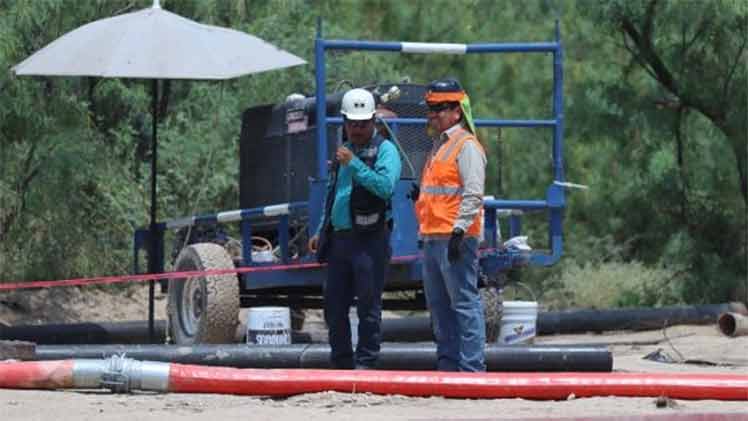The Civil Protection coordinator, Laura Velazquez, reported this at the press conference at the National Palace, saying that the water in the three main shafts still remains at the 34-meter mark.
However, inspections and investigations continue to be carried out inside the shafts along with electrical tomography in order to determine the resistance profiles of the walls and the possibility of operating.
Experts from a German company from the Mining Safety Institute held an videoconference with personnel working to rescue the miners, and agreed with the Mexican technical team on everything, including the need to identify the point of entry of the water flooding the shafts.
They also agreed on the strategy of sealing water inlets and estimated fractures as possible ways of leaking rain water, as well as continuing with ventilation to eliminate gases and avoid their accumulation.
Velazquez revealed that yesterday there was another face-to-face meeting with technicians from a United States company and it was concluded that the Mexican technical team is up to the task and has enough experience to conduct rescue work and apply correct methods, which validated the work of the Mexican personnel.
They emphasized that the group of Mexican engineers provided accurate information and considered their work to be correct.
pgh/llp/mv/lma









